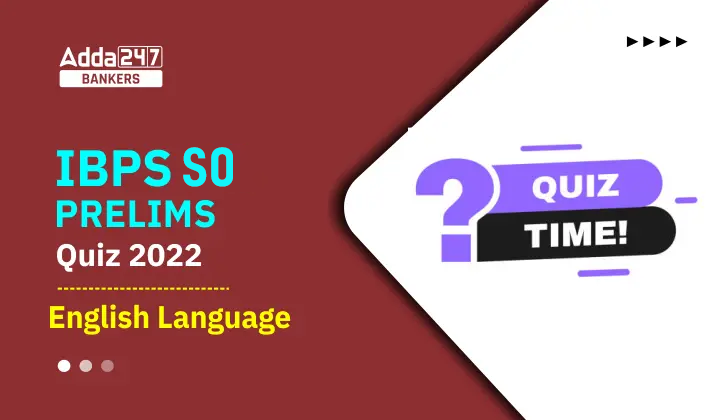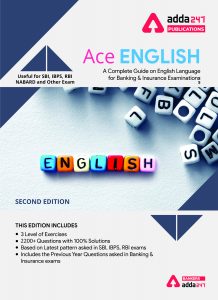Directions (1-10): Read the following passage carefully and answer the questions given below it. Certain words are given in bold to help you locate them while answering some of the questions.
Last week, Amazon founder and chief executive officer Jeff Bezos tweeted a request for ideas on philanthropic strategy. He noted that much of his work—through Amazon and The Washington Post, for example—was designed for impact in the long term. But for his philanthropic activities, he was interested in working at the intersection of urgent need and lasting impact. His tweet has since received thousands of responses, many from social enterprises looking for funding, but also from economists and development professionals advising Bezos on how best to channel his resources. This is an important conversation—one Indian philanthropist would do well to follow.
Indian philanthropy, especially individual philanthropy, is at a critical point. According to Bain’s “India Philanthropy Report 2017”, India’s philanthropy market has “matured” considerably, particularly when it comes to contributions from individual philanthropists. Indeed, the report finds that the amount of funds coming from individual philanthropists has grown sixfold in the past five years, from Rs6,000 crore in 2011 to Rs36,000 crore in 2016. Contributions from individual philanthropists have also grown faster than those coming from any other source, such as foreign aid, or from corporate social responsibility (CSR) activities.
The Bain report estimates that India will be short by Rs533 trillion if it’s to achieve its UN-mandated Sustainable Development Goals by 2030. Individual philanthropists can play an important role in bridging the gap. Funding trends for the development sector are already moving in that direction. In 2016, private donations made up 32% of total contributions to the development sector compared to just 15% in 2011. The government, of course, is still the largest contributor—in 2016, it spent Rs1.5 trillion in the development sector—but its share in the funding pie is declining steadily and its profile is being renegotiated as philanthropic foundations take on a greater role in driving development initiatives.
For these initiatives to be effectively realized, the focus has to go beyond the quantum of philanthropy to asking how and where those rupees can be leveraged for maximum impact. From the government’s point of view, this means preparing the ground for greater collaboration with philanthropic foundations. This is already happening at the local level but there’s more scope for cooperation with the Centre. The government also has a role in ensuring transparency and accountability—a Dalberg study found that India has been unable to leverage the philanthropic potential of its diaspora because the latter perceives the development sector to be corrupt and inefficient, and is overwhelmed by regulatory constraints and unfavourable tax policies.
From the donor’s point of view, the crux of effective philanthropy needs to be designing for maximum impact. First, a potential donor needs to decide where he wants his money to be spent—education, healthcare, disaster relief, public policy, arts and culture, etc. In India, a 2013 study by McKinsey found, there are at least 50 sub-sectors that suffer from a funding gap but donor efforts are focused on just seven to 10 sub-sectors, such as disaster relief and primary health and education. In comparison, in the US, where the philanthropy sector is more developed, donor resources cover a wider range of sub-sectors such as public affairs and environment, even though education and healthcare still get the lion’s share of funding.
Q1. Why according to the passage, Jeff Bezos required ideas on philanthropic strategies?
(I) He wanted his work—through Amazon and The Washington Post to be designed for impact in the long term.
(II) He was more concerned about his philanthropic contributions as he felt the urgency and long term impacts of these activities.
(III)He wanted the best ideas from economists and professionals already working in this field.
(a)Only (I) is correct
(b)Only (II) is correct
(c)Both (I) and (III) are correct
(d)Both (II) and (III) are correct
(e)All are correct
Q2. Which of the following statements justify the state of maturity of India’s philanthropy market?
(I)There is a six-fold increment in the amount of contribution from individual philanthropists in the past five years.
(II)Individual philanthropists have shown a tremendous growth in their contributions as compared to foreign aid and Corporate Social Responsibility activities.
(III)It is expected to fulfill the UN-mandated Sustainable Development goals by 2030 if continues to follow the same development pattern.
(a)Only (I) is correct
(b)Only (II) is correct
(c)Only (III) is correct
(d)Both (I) and (II) are correct
(e)All are correct
Q3. Which of the following is not correct about India’s UN-mandated Development Goals?
(a)India may end up with the deficiency of Rs. 533 trillion by 2030.
(b)The private donations to the development sector have almost doubled since 2011.
(c)Individual philanthropists could play a crucial role in achieving the desired target of UN-mandated Development goals.
(d)Despite being the largest contributor to the development sector, the government’s grant is contracting steadily every year.
(e)All are correct.
Q4. How according to the passage development initiatives could be efficiently accomplished?
(I)The focus should shift beyond the quantum of philanthropy to asking how and where those rupees can be utilized for maximum impact.
(II)The government should extend its association with philanthropic foundations.
(III)The government should ensure transparency and accountability to attain the philanthropic potential of its diaspora.
(a)Only (I) is correct
(b)Only (II) is correct
(c)Both (I) and (III) are correct
(d)Both (II) and (III) are correct
(e)All are correct
Q5. How according to the passage, a potential donor could help in the development of philanthropy sector?
(I)A potential donor should know where he wants his money to be spent—education, healthcare, disaster relief, public policy, arts and culture, etc. to implement the maximum impact of his donation.
(II)It is important that donors consider the design and impact of their philanthropic activities and the intersection with development activities carefully.
(III)A potential donor should work in collaboration with the government to ensure the proper leverage of his donation.
(a)Only (I) is correct
(b)Only (III) is correct
(c)Both (I) and (II) are correct
(d)Both (II) and (III) are correct
(e)All are correct
Q6. Which of the following words expresses the tone of the author in writing the passage?
(a)Encouraging
(b)Evasive
(c)Critical
(d)Ironic
(e)Scornful
Q7. Choose the word/group of words which is most similar in meaning to the word/group of words printed in bold as used in passage.
Crux
(a)Grief
(b)Source
(c)Essence
(d)Urgency
(e)Stew
Q8. Choose the word/group of words which is most similar in meaning to the word/group of words printed in bold as used in passage.
Sustainable
(a)Tenable
(b)Ordinary
(c)Sufficient
(d)Adequate
(e)Satisfactory
Q9. Choose the word/group of words which is most opposite in meaning to the word/group of words printed in bold as used in passage.
Critical
(a)Satirical
(b)Unimportant
(c)Pivotal
(d)Decisive
(e)Unsympathetic
Q10. Choose the word/group of words which is most opposite in meaning to the word/group of words printed in bold as used in passage.
Constraint
(a)Curb
(b)Control
(c)Formality
(d)Openness
(e)Interest
Directions (11-15): Read each sentence to find out whether there is any grammatical or idiomatic error in it. The error, if any, will be in one part of the sentence. The number of that part is the answer. If there is ‘No error’, the answer is (e). (Ignore errors of punctuation, if any.)
Q11. I declined the invitation (A)/ not because I did not (B)/ want to go but (C)/ because I have no time. (D)/ No error (E)
(a) A
(b) B
(c) C
(d) D
(e) E
Q12. Let us (A)/ congratulate him (B)/ for his success (C)/ in the examination (D)/ No error (E)
(a) A
(b) B
(c) C
(d) D
(e) E
Q13. Ancient artefacts are (A)/ a part of global heritage (B)/ and should not be (C)/ sold to the highest bidder. (D)/ No error (E)
(a) A
(b) B
(c) C
(d) D
(e) E
Q14. When I heard his knock (A)/ I went to the door and opened it, (B)/ but I did not recognize him (C)/ at first because I was not wearing my glasses. (D)/ No error. (E)
(a) A
(b) B
(c) C
(d) D
(e) E
Q15. We had heard the engine roar (A)/ as the plane began to move (B)/ and we saw the people (C)/ on the ground waving good bye (D)/ No error. (E)
(a) A
(b) B
(c) C
(d) D
(e) E
Solutions
S1. Ans. (b)
Sol. Refer the first paragraph, “But for his philanthropic activities, he was interested in working at the intersection of urgent need and lasting impact.” Hence only option (II) is correct in context of the passage.
S2. Ans. (d)
Sol. Refer the second paragraph, “According to Bain’s “India Philanthropy Report 2017”, India’s philanthropy market has “matured” considerably…………………………………… …amount of funds coming from individual philanthropists has grown sixfold in the past five years, from Rs6,000 crore in 2011 to Rs36,000 crore in 2016. Contributions from individual philanthropists have also grown faster than those coming from any other source, such as foreign aid, or from corporate social responsibility (CSR) activities.” Hence both the statements (I) and (II) justify the maturity of India’s philanthropic market.
S3. Ans. (e)
Sol. Read the third paragraph carefully, it can be easily inferred from there that all four statements are correct regarding India’s UN-mandated development goals. Hence (e) is the correct option.
S4. Ans. (e)
Sol. Refer the fourth paragraph, all three statements can be easily inferred from there. Hence (e) is the correct option.
S5. Ans. (c)
Sol. Refer the last paragraph of the passage, “From the donor’s point of view, the crux of effective philanthropy needs to be designing for maximum impact. First, a potential donor needs to decide where he wants his money to be spent—education, healthcare, disaster relief, public policy, arts and culture, etc.” Hence both the statements (I) and (II) are correct in context of the passage.
S6. Ans. (a)
Sol. The author has tried his best in encouraging the development of the philanthropic sector by focusing on vivid areas of concern. Also the statement in the first paragraph, “This is an important conversation—one Indian philanthropist would do well to follow.” further explains the encouraging, optimistic and supportive attitude of the author. Hence (a) is the correct option.
S7. Ans. (c)
Sol. Crux means the decisive or most important point at issue. Hence ‘essence’ is the word most similar in meaning to it.
Stew means a state of great anxiety or agitation.
S8. Ans. (a)
Sol. Sustainable means conserving an ecological balance by avoiding depletion of natural resources. Tenable means able to be maintained or defended against attack or objection. Hence both are almost similar in meaning.
S9. Ans. (b)
Sol. Critical means having a decisive or crucial importance in the success, failure, or existence of something. Hence ‘unimportant’ is the word most opposite in meaning to it.
S10. Ans. (d)
Sol. Constraint means a limitation or restriction. Hence ‘openness’ is the word most opposite in meaning to it.
S11. Ans. (d)
Sol. ‘had’ will be used in place of ‘have’ because words like ‘declined’ and ‘did’ infer that the sentence is in past.
S12. Ans. (c)
Sol. Use ‘on’ in place ‘for’ because ‘congratulate somebody on something’ or ‘Be congratulated on something’ is used. Ex. I congratulated him on his grand success.
S13. Ans. (e)
Sol. The sentence is grammatically correct.
S14. Ans. (a)
Sol. In place of ‘his’, ‘him’ will be used because pronoun used after verbs like ‘hear, watch, behold, see, let, make and bid’ is in objective case. Ex. I saw him yesterday.
S15. Ans. (a)
Sol. Use ‘heard’ in place of ‘had heard’ because ‘had+ third form of verb’ is used in Past perfect while second form of verb is used in simple past.





 English Language Quiz For Bank Foundatio...
English Language Quiz For Bank Foundatio...
 English Language Quiz For Bank Mains Exa...
English Language Quiz For Bank Mains Exa...


